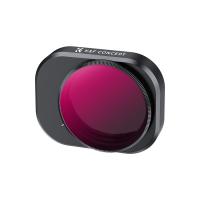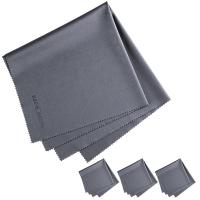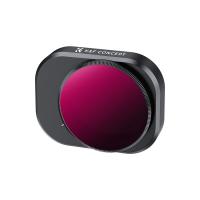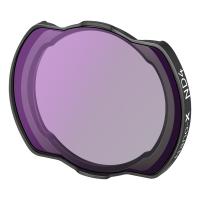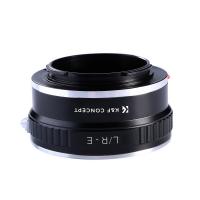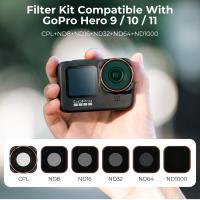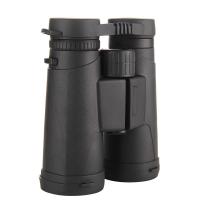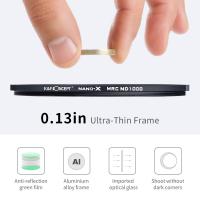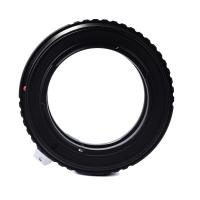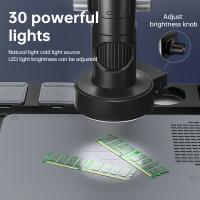How To Connect Surveillance Camera Sm-2kitc7016n To Tv ?
To connect the surveillance camera SM-2KITC7016N to a TV, you will need to follow these steps:
1. Locate the video output port on the surveillance camera. It is usually an RCA or BNC connector.
2. Identify the corresponding video input port on your TV. It can also be an RCA or BNC connector, or it may be an HDMI or VGA port.
3. If the camera and TV have matching connectors (e.g., both RCA or both BNC), simply connect the camera's video output to the TV's video input using the appropriate cable.
4. If the camera and TV have different connectors, you will need to use an adapter or converter. For example, if the camera has a BNC connector and the TV has an HDMI port, you will need a BNC to HDMI converter.
5. Once the camera is connected to the TV, power on both devices.
6. Use the TV's input/source button to select the appropriate input channel where the camera is connected.
7. You should now be able to see the surveillance camera's video feed on your TV screen.
Note: Make sure to consult the user manuals of both the camera and TV for specific instructions and compatibility information.
1、 Check compatibility between surveillance camera and TV model.
To connect the surveillance camera SM-2KITC7016N to your TV, you will need to check the compatibility between the camera and your TV model. Here are the steps to follow:
1. Check the camera's output: The SM-2KITC7016N surveillance camera likely has multiple output options such as HDMI, VGA, or BNC. Check the available outputs on the camera and ensure that your TV has a corresponding input.
2. Determine the TV's input options: Look for the input ports on your TV. Most modern TVs have HDMI ports, but older models may have VGA or BNC inputs. Make sure your TV has the necessary input to connect the camera.
3. Choose the appropriate cable: Depending on the camera's output and TV's input, select the appropriate cable. For HDMI, use an HDMI cable; for VGA, use a VGA cable; and for BNC, use a BNC cable. Ensure that the cable is long enough to reach from the camera to the TV.
4. Connect the camera to the TV: Plug one end of the cable into the camera's output port and the other end into the TV's input port. Make sure the connections are secure.
5. Power on the camera and TV: Turn on both the camera and the TV. Use the TV's remote control to switch to the correct input source. If you connected the camera correctly, you should see the camera's video feed on your TV screen.
It is important to note that the steps mentioned above are general guidelines. It is always recommended to refer to the user manuals of both the surveillance camera and the TV for specific instructions and compatibility information. Additionally, technology is constantly evolving, so it is advisable to check for any updated information or alternative methods that may be available for connecting surveillance cameras to TVs.

2、 Connect camera to TV using appropriate cables.
To connect the surveillance camera SM-2KITC7016N to a TV, you will need to follow a few simple steps. First, ensure that your TV has the necessary ports to connect the camera. Most modern TVs have HDMI or RCA ports, which are commonly used for connecting cameras.
1. Determine the type of cable needed: Check the ports available on both the camera and the TV. If both have HDMI ports, use an HDMI cable for the best quality. If your TV only has RCA ports, you will need an RCA cable.
2. Connect the camera to the TV: Plug one end of the cable into the camera's output port and the other end into the corresponding input port on the TV. Make sure to match the colors of the RCA cables (yellow for video, red and white for audio) to the corresponding ports on the TV.
3. Power on the camera and TV: Once the cables are connected, power on both the camera and the TV. Use the TV remote to switch to the appropriate input source. If using HDMI, select the HDMI input. If using RCA, select the AV input.
4. Adjust camera settings: Depending on the camera model, you may need to adjust the settings to display the video feed on the TV. Refer to the camera's user manual for specific instructions on how to do this.
It's worth noting that some surveillance cameras also offer wireless connectivity, allowing you to connect them to your TV using Wi-Fi or Bluetooth. This eliminates the need for cables and provides more flexibility in camera placement.
Always refer to the user manual of your specific camera and TV for detailed instructions and troubleshooting tips.

3、 Adjust TV settings to display camera feed.
To connect the surveillance camera SM-2KITC7016N to your TV, you will need to follow a few steps. Here's a guide on how to do it:
1. Check the camera's output: The SM-2KITC7016N surveillance camera typically has multiple output options, such as HDMI, VGA, or BNC. Make sure you know which output your TV supports.
2. Connect the camera to the TV: Use the appropriate cable (HDMI, VGA, or BNC) to connect the camera's output to the corresponding input on your TV. Ensure that the connections are secure.
3. Power on the camera and TV: Turn on both the surveillance camera and the TV. Make sure they are both powered up and ready to use.
4. Adjust TV settings: Use your TV's remote control to access the settings menu. Look for options related to input selection or source. Select the input source that corresponds to the connection you made in step 2 (HDMI, VGA, or BNC).
5. Display camera feed: Once you have selected the correct input source, the TV should display the camera feed. You may need to wait a few seconds for the TV to recognize the camera and establish a connection.
6. Adjust camera settings (optional): If needed, you can adjust the camera settings to optimize the image quality or customize other features. Refer to the camera's user manual for instructions on how to access and modify these settings.
It's important to note that the specific steps may vary depending on the make and model of your TV and surveillance camera. Therefore, it's always recommended to consult the user manuals for both devices for detailed instructions tailored to your specific setup.
In conclusion, connecting the surveillance camera SM-2KITC7016N to your TV involves making the appropriate physical connections and adjusting the TV settings to display the camera feed.

4、 Troubleshoot any connection or compatibility issues.
To connect the surveillance camera SM-2KITC7016N to your TV, you will need to follow a few steps. First, ensure that your TV has the necessary inputs to connect the camera. Most modern TVs have HDMI or RCA inputs, so check if your camera has either of these outputs.
If your camera has an HDMI output, simply connect one end of the HDMI cable to the camera and the other end to an available HDMI input on your TV. Once connected, switch your TV's input source to the corresponding HDMI input, and you should see the camera's video feed on your TV screen.
If your camera has RCA outputs, you will need an RCA-to-HDMI converter. Connect the RCA cables from the camera to the converter, and then use an HDMI cable to connect the converter to an available HDMI input on your TV. Again, switch your TV's input source to the HDMI input connected to the converter.
If you encounter any issues during the connection process, there are a few troubleshooting steps you can try. First, ensure that all cables are securely connected and that there are no loose connections. If the video feed is not displaying on your TV, try using a different HDMI cable or RCA cables to rule out any cable issues.
Additionally, check the camera's settings to ensure that the output resolution is compatible with your TV. Some cameras may have specific resolution requirements for optimal compatibility with TVs.
If you are still experiencing issues, consult the user manual for both the camera and your TV for further troubleshooting steps. You may also consider reaching out to the manufacturer's customer support for assistance.
It's important to note that the latest point of view on connecting surveillance cameras to TVs is the increasing popularity of IP cameras, which can be connected to the TV through the local network. This method requires configuring the camera's IP address and accessing it through a compatible app or software on the TV. However, this may not be applicable to the SM-2KITC7016N model, as it appears to be an analog camera.












